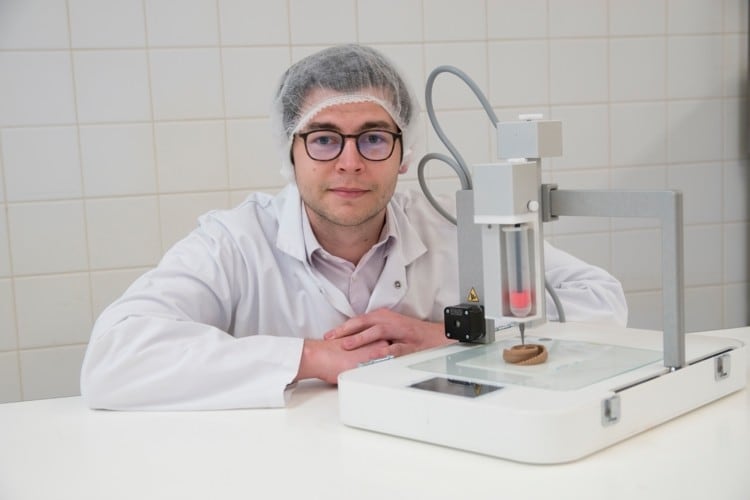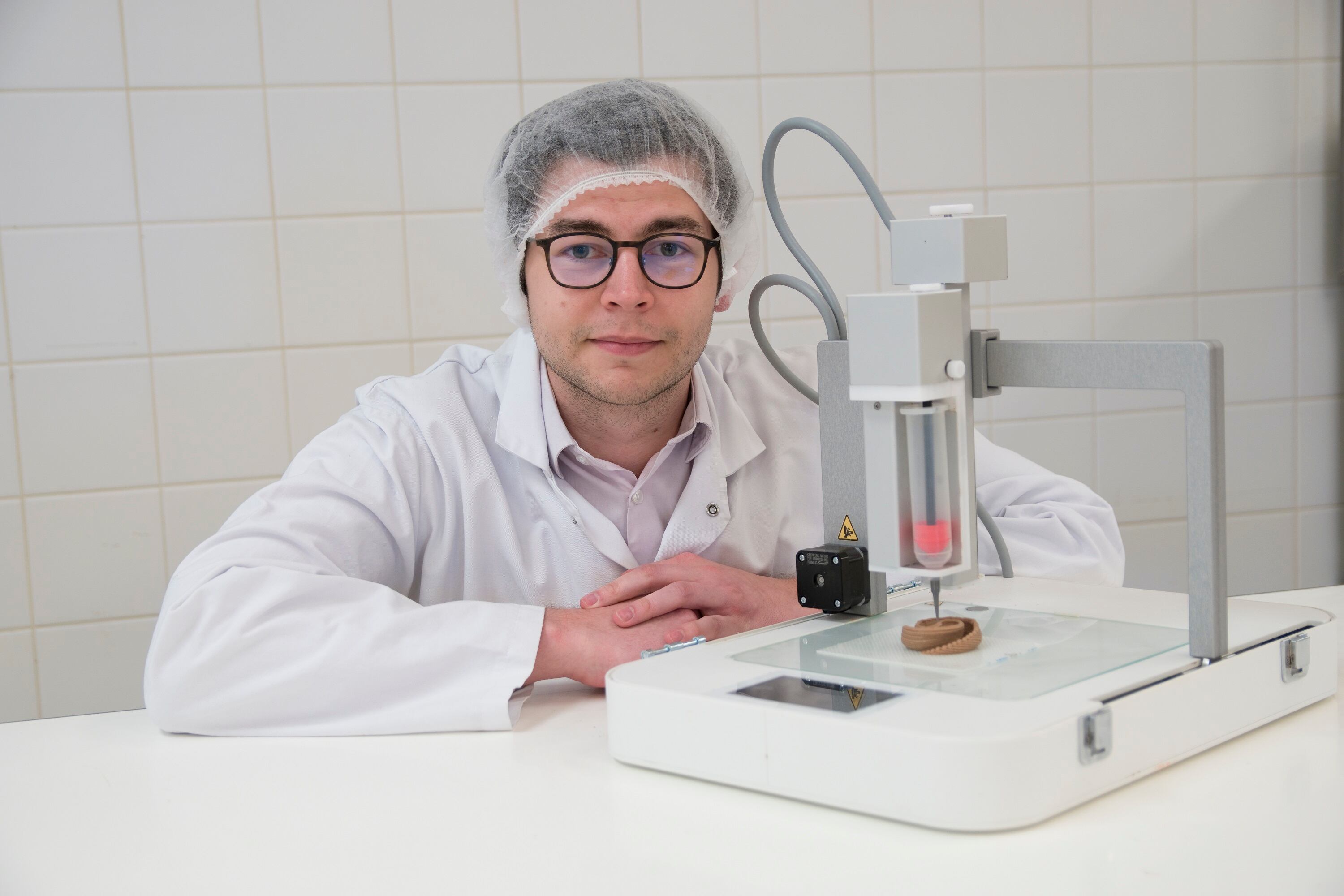The relationship between 3D printing and food is not straightforward
The typical non-food printable materials include plastic, silicone and steel that are based on a majoritarian or single polymer whose properties are well known. For instance, plastic can easily be melted and extruded into the designed shape while quickly solidifying at ambient temperature allowing to self-support the added layers. By its nature, food has a much more complex composition with molecules like proteins, carbohydrates, lipids and dietary fibre that vary in proportion as well as at a molecular level. This variability depends on the type of food itself, its variety or genetic background, the growing conditions and the further processing prior to printing.
All the constituting molecules can then interact together and exhibit a range of functionalities like gelation, water binding and elasticity that will dictate the rheology of food and its printability into a pre-defined shape with fused deposition modelling, one of the most common 3D food printing technologies. This is where food scientists intervene to characterise the behaviour of food materials and improve their printability. In addition to this, while it is not a requirement for plastic or silicone printing, food safety needs to be considered when it comes to printing food.
Food safety risks must be considered
3D-printed foods usually have a limited shelf-life due to structural changes that can occur over time as well as the potential, in some instances, for microbial growth. To reduce the food safety risks, the printers need to be hygienically designed with food grade material so that they can be cleaned thoroughly.
Printed food might require further processing
In fused deposition modelling, the rheology of food is another aspect that needs to be considered as it will affect its extrudability as well as the ability of a food layer to support the accumulation of layers and build the height of the shape. The rheology of food can easily be manipulated through the modification of the recipe by adding functional ingredients like proteins and starch, or by printing the food at a different temperature. To complement this, enzymes could be used to help maintain the shape of meat purees by creating bonds between molecules while freeze chilling of printed cookie doughs prior to baking could help the food material maintain its shape throughout baking by preventing the liquefaction of the butter in the dough.
Waste reduction and sustainability are among the bonuses of 3D printing
3D printing enables the late customisation of food in terms of colours, flavours and shape to satisfy the consumer’s desires, as well as waste reduction by printing on-demand the amount of food required, and the reduction of NPD times by prototyping food. It’s sustainable, too and can revalorise potential food waste like fruits and vegetables with blemishes that would otherwise go to waste, use food manufacturing by-products including brewer’s spent grains, press cakes from oil processing or dairy proteins from cheese manufacturing, and incorporate inherently sustainable and nutritious ingredients that are unappealing in their native form like algae and insect ingredients.
How can this technology help the public’s health?
With 3D-printing of food, the consumers could select their profile to meet their dietary needs. For instance, the elderly population typically requires supplementation of Vitamin D and calcium to enhance their skeletal health, as well as proteins to help maintain their muscle mass. In addition to this, if a blood test reveals that an elderly person has iron deficiency anaemia, the GP could advise to increase his or her consumption of iron-rich foods. All these specific dietary needs could be met by printing food specifically designed for this consumer.
Top five hurdles
- Speed and scale: as it is a relatively new technology, 3D printers currently have a low throughputs which is nowhere near the speed of conventional technologies that manufacturers require to cost-effectively produce food
- Cleanability: 3D-printers intended for food use need to be hygienically designed to optimise their cleanability and reduce the food safety risks
- Expertise on how to modify the rheology of food and design shapes for successfully printed food
- Post-printing processes required like baking or cooking could help set or on the contrary melt the shape
- Unknown consumer attitude towards the technology




